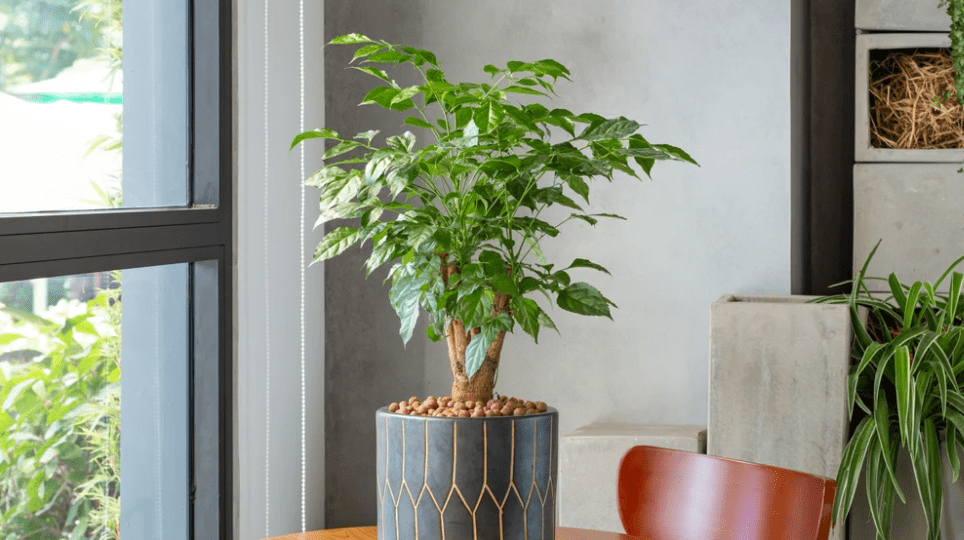
Caring for Your Chinese Doll Tree: Tips for Thriving Indoor Growth
Caring for indoor plants can be a rewarding experience, but it does require some knowledge and attention to detail. The Chinese Doll Tree, also known as Radermachera sinica, is a beautiful and unique plant that can thrive indoors with the right care. In this post, we’ll cover the essential tips and techniques for ensuring your Chinese Doll Tree not only survives but thrives in an indoor environment. From proper watering and lighting to maintenance and troubleshooting, we’ve got you covered with everything you need to know. So, if you’re ready to take your indoor gardening skills to the next level, keep reading for our expert advice on caring for your Chinese Doll Tree.
Table of Contents
ToggleUnderstanding the Chinese Doll Tree
A. Description and origin of the Chinese Doll Tree
The Chinese Doll Tree, also known as Radermachera sinica, is a stunning plant native to subtropical regions of China and Taiwan. It is a member of the Bignoniaceae family and is known for its glossy, dark green leaves and beautiful, trumpet-shaped flowers. The Chinese Doll Tree can grow up to 6-8 feet tall, making it a striking addition to any indoor space. As with any plant, understanding its natural habitat and growth habits is key to providing the best care for it in an indoor environment.
B. Characteristics and growth habits
The Chinese Doll Tree is a relatively low-maintenance plant that thrives in well-draining soil and bright, indirect light. It can tolerate some direct sunlight, but too much can scorch its leaves. This plant prefers moderate humidity, so misting the leaves or placing a humidity tray nearby can help keep it healthy. In terms of watering, it’s important to let the soil dry out slightly between waterings, as the Chinese Doll Tree is susceptible to root rot if overwatered. With proper care, this plant can live for many years and bring beauty to your indoor garden.
C. Common uses and benefits as an indoor plant
The Chinese Doll Tree is commonly used as an indoor plant for its attractive foliage and relatively low maintenance requirements. It can help improve indoor air quality by filtering out toxins and adding oxygen to the air. Additionally, its graceful growth habit and elegant foliage make it a popular choice for adding a touch of greenery to indoor spaces. With its unique appearance and easy care, the Chinese Doll Tree is a great choice for anyone looking to add a touch of nature to their home or office.
Choosing the Right Chinese Doll Tree
A. Selecting a healthy plant from the nursery
When selecting a Chinese Doll Tree from the nursery, look for a plant with healthy, vibrant leaves and strong, sturdy stems. Avoid plants with any signs of pests or disease, such as yellowing or drooping leaves. It’s also important to check the roots of the plant to ensure they are not crowded or root-bound in the pot. Choose a plant that is well-proportioned and balanced, with a good overall shape. Taking the time to select a healthy plant from the nursery will give your Chinese Doll Tree the best chance of thriving in your indoor garden.
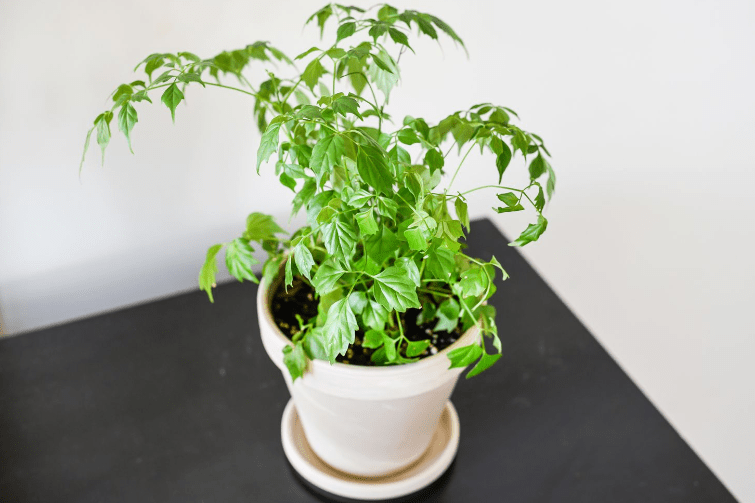
B. What to look for: leaves, stems, roots
When choosing a Chinese Doll Tree from the nursery, it’s important to look for healthy, vibrant leaves, strong stems, and roots that are not overcrowded in the pot. Avoid plants with signs of pests or disease and select a well-proportioned and balanced plant with a good overall shape for the best chances of success in your indoor garden.
Ideal Growing Conditions
A. Light requirements: optimal light levels and placement
Chinese Doll Trees thrive in bright, indirect light. Place your plant near a sunny window where it can receive plenty of natural light, but be sure to avoid direct sunlight, as this can scorch the leaves. If you don’t have access to a suitable window, you can also use grow lights to provide the necessary light levels for your Chinese Doll Tree. With the right light conditions, your plant will be able to grow and flourish in your indoor garden.
B. Temperature and humidity preferences
Chinese Doll Trees prefer temperatures between 65-75°F during the day and slightly cooler temperatures at night. They also thrive in higher humidity, so it’s important to keep the air around your plant moist. You can achieve this by misting the leaves regularly or placing a humidifier near the plant. By providing the ideal temperature and humidity levels, you can ensure that your Chinese Doll Tree will thrive in your indoor garden.
C. Suitable soil types and potting mix
Chinese Doll Trees thrive in a well-draining potting mix that is rich in organic matter. A mix of peat moss, perlite, and compost is ideal for providing the right conditions for your plant to grow. Make sure the pot has drainage holes to prevent water from accumulating at the bottom and potentially causing root rot. It’s also important to repot your Chinese Doll Tree every couple of years to refresh the soil and provide adequate space for root growth. By using the right soil types and potting mix, you can create the perfect environment for your plant to flourish in your indoor garden.
Planting and Potting
A. Choosing the right pot: size and material considerations
When choosing a pot for your Chinese Doll Tree, it’s important to consider the size and material. The pot should be large enough to provide room for the plant’s roots to grow, but not too large that it retains excess water. A terracotta or ceramic pot is a great choice as it allows for air and moisture exchange, while also adding a decorative touch to your indoor garden. Avoid using plastic pots as they can retain too much moisture and cause root rot. Additionally, make sure the pot has drainage holes to allow excess water to escape and prevent waterlogged soil. Choosing the right pot size and material will help create a healthy and supportive environment for your Chinese Doll Tree to thrive in.
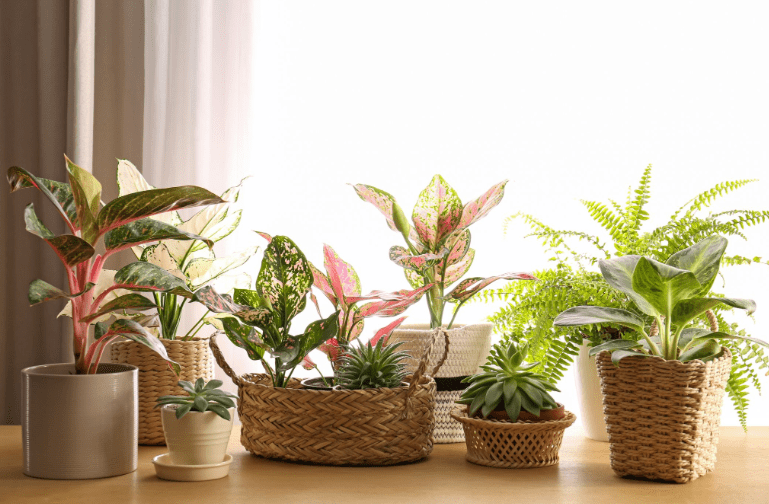
B. Step-by-step guide to planting or repotting
To plant or repot your Chinese Doll Tree, start by choosing a pot that is large enough to accommodate the plant’s roots, but not excessively large. Make sure the pot is made of terracotta or ceramic to allow for air and moisture exchange, and avoid using plastic pots that can retain too much moisture. Ensure the pot has drainage holes to prevent waterlogged soil. When planting, use well-draining potting soil and gently place the plant in the center of the pot. Fill the remaining space with soil, leaving about an inch of space at the top. Water the plant thoroughly after planting, and place it in a location with bright, indirect sunlight. Make sure to water the plant regularly and monitor its growth to ensure it has a healthy and supportive environment to thrive in.
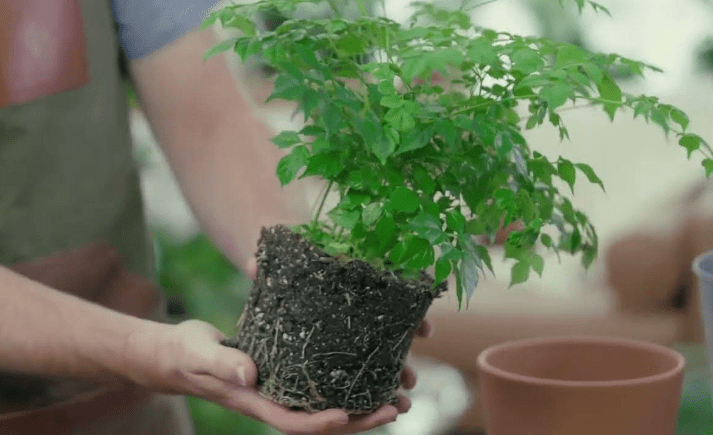
C. Tips for ensuring proper drainage
When it comes to ensuring proper drainage for your potted plants, there are a few key tips to keep in mind. First, it’s important to choose a pot made of terracotta or ceramic, as these materials allow for air and moisture exchange, unlike plastic pots which can retain too much moisture. Additionally, make sure the pot has drainage holes to prevent waterlogged soil.
When planting, use well-draining potting soil and gently place the plant in the center of the pot. Fill the remaining space with soil, leaving about an inch of space at the top. Water the plant thoroughly after planting, and place it in a location with bright, indirect sunlight.
It’s essential to water the plant regularly and monitor its growth to ensure it has a healthy and supportive environment to thrive in. By following these tips, you can help ensure that your potted plants have proper drainage and create a conducive environment for their growth.
Watering and Feeding
A. How often to water: signs of overwatering and underwatering
It’s important to water your potted plants regularly, but not too often. You should water them when the top inch of soil feels dry to the touch. Signs of overwatering include yellowing or wilting leaves, while signs of underwatering include dry, brittle leaves. It’s important to monitor the soil moisture and adjust your watering frequency accordingly. Additionally, it’s important to feed your potted plants with a balanced fertilizer every 4-6 weeks during the growing season to support their growth.
B. Fertilizing schedule: types of fertilizers and application methods
When it comes to fertilizing your potted plants, it’s important to use a balanced fertilizer and apply it every 4-6 weeks during the growing season. There are various types of fertilizers available, such as liquid, granular, or slow-release fertilizers, so it’s important to choose the one that’s best for your specific plants. When applying the fertilizer, make sure to follow the instructions on the packaging and water the plants afterwards to help the nutrients penetrate the soil. By following a consistent fertilizing schedule and using the right type of fertilizer, you can help your potted plants thrive and stay healthy.
Pruning and Maintenance
A. Importance of pruning for shape and health
Pruning is important for both the shape and health of your plants. By removing dead or overgrown branches, you can encourage new growth and maintain a pleasing shape. Additionally, pruning helps to improve air circulation and sunlight exposure, which are essential for the overall health of your plants. It’s important to prune your plants regularly, especially during the growing season, to help them stay healthy and vibrant. Be sure to use sharp, clean pruning tools and to prune just above a node or bud to promote new growth. Regular pruning will not only keep your plants looking their best but also contribute to their overall well-being.
B. Techniques for effective pruning
Techniques for effective pruning include making clean cuts at a 45-degree angle, removing any crossing or rubbing branches, and avoiding pruning too close to the trunk or main stem. It’s also important to consider the specific needs of each type of plant and to research the best time of year to prune for each species. Overall, proper pruning is an important aspect of plant care that can contribute to the longevity and vitality of your garden or landscape.
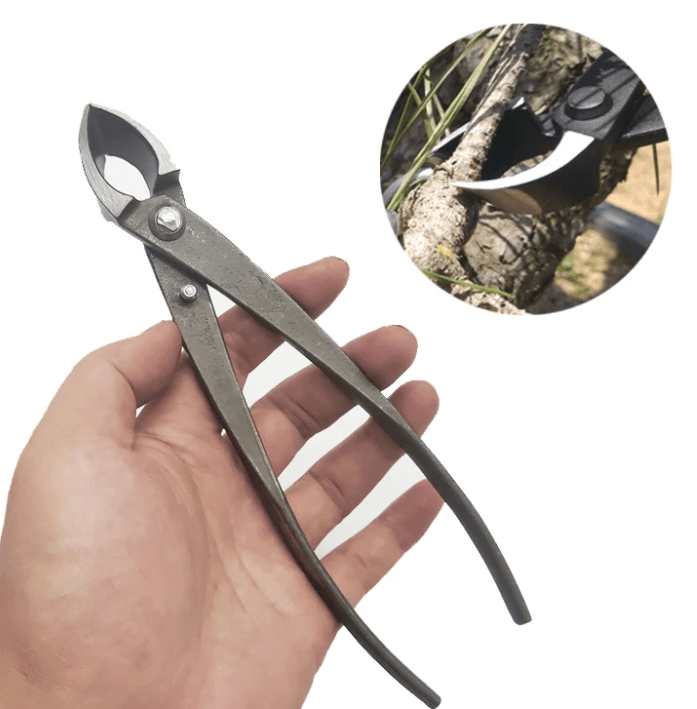
C. Managing common issues like yellowing leaves and leggy growth
When managing common issues like yellowing leaves and leggy growth, it’s important to first identify the cause of the problem. Yellowing leaves can be a sign of nutrient deficiencies or overwatering, while leggy growth can be a result of insufficient sunlight or overcrowding. Addressing these issues may require adjusting watering habits, providing proper nutrients, or relocating plants to a sunnier spot. Regular pruning can also help manage leggy growth by promoting new, more compact growth. It’s important to regularly monitor your plants and address any issues as soon as they arise to ensure their overall health and vitality.
Pest and Disease Management
A. Common pests affecting Chinese Doll Trees: identification and treatment
When it comes to managing common pests affecting Chinese Doll Trees, it’s important to be able to identify and treat them effectively. Some common pests that can affect Chinese Doll Trees include aphids, scale insects, and mealybugs. These pests can cause damage to the leaves and stems of the tree, as well as stunt its growth.
To identify these pests, carefully inspect the leaves and stems of the tree for any signs of infestation, such as small insects or a sticky residue on the plant. Once identified, there are several treatment options available, including insecticidal soaps, horticultural oils, or natural predators such as ladybugs or lacewings.
Regularly monitoring your Chinese Doll Trees for signs of pests and promptly treating any infestations can help to ensure their overall health and vitality. It’s also important to practice good garden hygiene by removing any fallen leaves or debris that could harbor pests and to avoid over-fertilizing, as this can attract pests. By staying vigilant and taking proactive measures, you can effectively manage common pests and help your Chinese Doll Trees thrive.
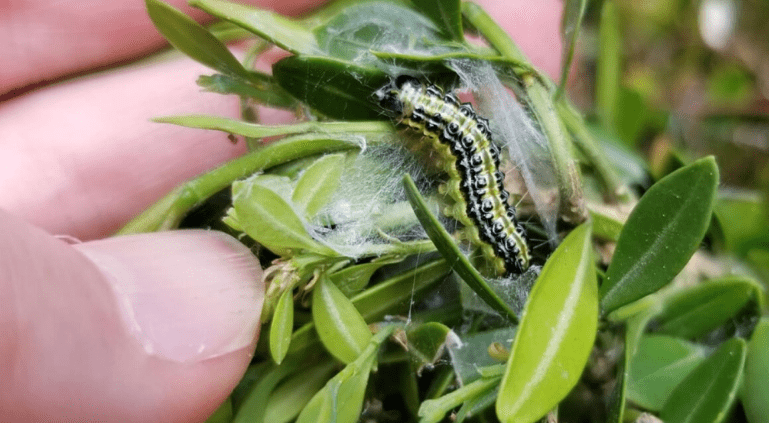
B. Disease prevention and management
Disease prevention is essential for maintaining the health of your Chinese Doll Tree. Common diseases that can affect these trees include powdery mildew, leaf spot, and root rot. To prevent these diseases, it’s important to provide adequate air circulation around the tree and avoid overwatering. If you notice any signs of disease, such as discolored or spotted leaves, it’s crucial to take immediate action. Remove any affected leaves or branches and treat the tree with a fungicidal spray as recommended by a gardening professional. Additionally, maintaining proper soil moisture and avoiding waterlogged conditions can help prevent root rot. By implementing these disease prevention and management techniques, you can ensure the long-term health and vitality of your Chinese Doll Tree.
Seasonal Care Tips
A. Adjusting care routines for different seasons
Throughout the seasons, it’s important to adjust your care routines for your Chinese Doll Tree. In the spring, focus on pruning and removing any dead or diseased branches to promote healthy growth. In the summer, be vigilant about monitoring for signs of powdery mildew and leaf spot, and provide ample water during dry periods. In the fall, continue to monitor for disease and adjust your watering schedule as the temperature drops. In the winter, protect your tree from frost by insulating the base and providing additional mulch. By adjusting your care routines based on the season, you can help your Chinese Doll Tree thrive year-round.
B. Preparing the plant for winter: indoor humidity and light adjustments
For preparing your Chinese Doll Tree for winter, it’s important to make adjustments to indoor humidity and light. During the winter months, the air inside your home can become drier, which can have a negative impact on your plant. Consider using a humidifier or misting the leaves to increase the humidity levels. Additionally, as light levels decrease during the winter, you may need to move your plant to a spot where it can receive more indirect sunlight or consider using grow lights to supplement. Making these adjustments will help ensure your Chinese Doll Tree remains healthy and happy throughout the winter months.
C. Summer care: avoiding heat stress and sunburn
During the summer months, it’s important to take steps to avoid heat stress and sunburn for your Chinese Doll Tree. To prevent heat stress, make sure your plant is not exposed to direct, intense sunlight for long periods of time. Consider moving it to a location with more shade or using a sheer curtain to filter the sunlight. Additionally, keep an eye on the soil moisture and water your plant more frequently during hot weather to prevent dehydration. To avoid sunburn, be mindful of the leaves and make sure they are not getting scorched by the sun. Taking these precautions will help keep your Chinese Doll Tree healthy and thriving during the summer season.
Troubleshooting Common Problems
A. Yellowing leaves: causes and solutions
Yellowing leaves on your Chinese Doll Tree can be caused by a few different factors. One common cause is overwatering, which can lead to root rot and yellowing leaves. Make sure to check the soil moisture and adjust your watering schedule accordingly. Another potential cause of yellowing leaves is insufficient light. If your plant is not getting enough light, it may start to show signs of yellowing. Consider moving it to a brighter location if you notice this issue. Additionally, nutrient deficiencies and pest infestations can also lead to yellowing leaves. If you suspect these issues, consider fertilizing your plant and inspecting it for any signs of pests. By addressing these potential causes, you can help your Chinese Doll Tree recover and thrive.
B. Drooping or wilting: how to revive your plant
If your Chinese Doll Tree is experiencing drooping or wilting, it may be due to a few different factors. One potential cause is overwatering, which can lead to root rot and ultimately cause the plant to wilt. Make sure to check the soil moisture before watering and adjust your watering schedule accordingly.
Another potential cause of drooping or wilting is underwatering. If the soil is dry and the plant is showing signs of wilting, it may be in need of water. Be sure to water your plant thoroughly and allow any excess water to drain out of the pot.
In some cases, drooping or wilting can also be a result of temperature stress or a lack of humidity. Chinese Doll Trees thrive in warm, humid environments, so make sure to keep them away from drafts and provide some extra humidity if needed.
By addressing these potential causes and adjusting your care routine as necessary, you can help revive your Chinese Doll Tree and promote healthy growth.
Benefits of the Chinese Doll Tree
A. Aesthetic appeal: enhancing your indoor space
Chinese Doll Trees are a great addition to any indoor space, not only for their aesthetic appeal but also for their air purification abilities. These trees help to purify the air in your home by removing toxins and pollutants, creating a healthier environment for you and your family. Additionally, Chinese Doll Trees are relatively low maintenance, making them a great option for those with a busy lifestyle. In Chinese culture, these trees are believed to bring good luck and positive energy to the home, adding a touch of feng shui to your living space. Caring for plants, such as the Chinese Doll Tree, has also been shown to have therapeutic benefits, promoting calmness and stress relief. By following proper watering, lighting, and maintenance techniques, you can ensure that your Chinese Doll Tree thrives in your indoor environment and provides these benefits to your home.
In conclusion, caring for your Chinese Doll Tree indoors requires attention to detail and a consistent watering and lighting schedule. By following the tips provided in this post, you can ensure that your plant thrives and adds beauty to your indoor space. Remember to monitor the soil moisture, provide adequate sunlight, and prune as needed to maintain the health and growth of your Chinese Doll Tree. With proper care, your plant will flourish and bring joy to your home.
Frequently Asked Questions (FAQs)
It is important to water your Chinese Doll Tree regularly, but be sure not to overwater. Allow the top inch of soil to dry out before watering again.
Chinese Doll Trees thrive in bright, indirect light. Place your tree near a window where it can receive plenty of natural light, but be sure to protect it from direct sunlight.
During the growing season, which is typically spring and summer, you can fertilize your Chinese Doll Tree once a month with a balanced, water-soluble fertilizer.
Chinese Doll Trees prefer temperatures between 60-75°F (15-24°C). Avoid exposing your tree to extreme temperature fluctuations or drafts.
Regular pruning can help maintain the shape and size of your Chinese Doll Tree. Remove any dead or damaged branches, and trim back any overgrown areas to promote healthy growth.
Use well-draining, peat-based potting soil for your Chinese Doll Tree. This will help prevent waterlogging and allow for proper root growth.
Repot your Chinese Doll Tree every 2-3 years, or when you notice that the roots are becoming overcrowded in the current pot. Choose a slightly larger pot to accommodate the growing roots
Keep an eye out for common houseplant pests such as spider mites, scale, and mealybugs. Also, watch for signs of root rot, which can occur if the soil is too wet. Treat any pest infestations promptly and adjust your watering routine if necessary to prevent root rot.
